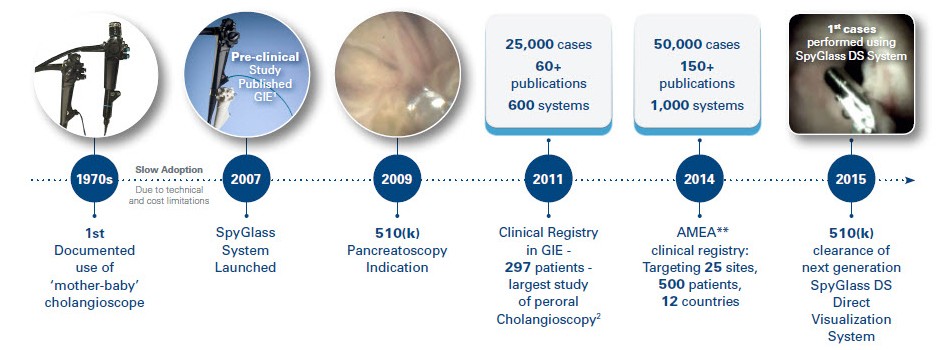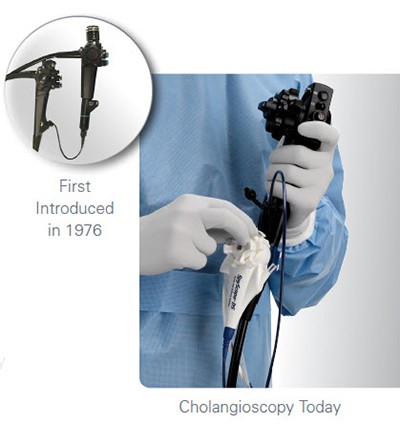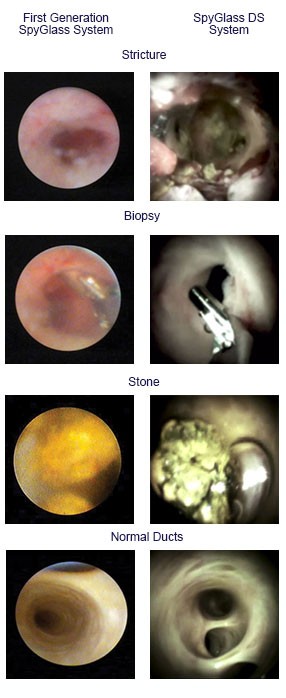SpyGlass™ DS
Direct Visualization System
Key Resources
Development of the SpyGlass™ Direct Visualization System
Launched in 2007, the first generation SpyGlass System was developed to:
- Overcome the limitations of traditional cholangioscopes
- Provide optically-guided therapeutics for targeted stricture and stone management
- Re-establish cholangioscopy and pancreatoscopy as a valuable diagnostic and therapeutic procedure
- Allow a single operator to perform the procedures
- Enable one physician to examine, diagnose and treat conditions such as gallstones and suspected malignancies of the biliary tree and pancreas
SpyGlass DS Direct Visualization System
- Launched in 2015
- Enables high resolution imaging and therapy during an ERCP procedure to target biopsies and fragment stones
- May result in more efficient evaluation
- May reduce the need for additional testing and repeat procedures compared to traditional ERCP
- May enable patients to receive treatment sooner compared to traditional ERCP
- Improved image quality with four times higher resolution and a 60% wider field of view*
- Fully integrated SpyScope™ DS Access and Delivery Catheter (single-use scope) eliminates probe reprocessing and image degradation over multiple uses
Development Timeline













